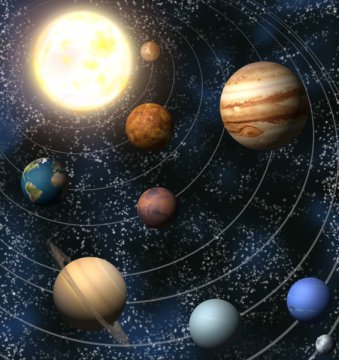Editorial Rant: Speculative Science, Planet Nine, and Space Junk
Science is wonderful. It helps us uneducated but interested lay people to a basic understanding of some of the mysteries of the world around us, and the more distant parts of the known universe as well. This reduces our need to rely on weird fantasy stories, confabulation and so on, to explain those things that would otherwise be difficult to grasp unaided, such as sex, electricity, magnetism, weather, the shape of the solar system, and gravity. Among other things.
I subscribe to a service that reports the results of scientific studies, and have found many fascinating nuggets of information there. But then there are the more speculative reports, the ones that contain such words as “may”, “could”, “might”, “possibly” and “if.”
The most recent and extreme example was headlined “Planet Nine Could Spell Doom for Solar System.” The piece went on to explain that this doom effect would perhaps happen after the sun “starts to die, in around seven billion years,” after it expands dramatically and becomes a red giant, swallowing up the inner planets — probably Mercury, Venus, Earth and maybe even Mars — and creating a sort of shock wave that would tend to push the outer planets — Jupiter, Saturn, Neptune, and Uranus — out to what might otherwise be a “safe” distance. (It doesn’t bother mentioning little Pluto, controversially stripped of its “true planet” status a while back.) And then, the paper postulates, the sun would die down to a new existence as a white dwarf. After another billion years or so.
A white dwarf is very dense, but only about the size of a planet such as earth, and is also described by scientists as a “degenerate” dwarf, which gives an unfairly unfavourable impression, don’t you think?
You may wonder (as I did) what the “doom” effect could possibly be, after the sun had vaporized the earth and its three companion planets. Bear in mind that Planet Nine has not actually been proven to exist — it has never been observed, but its existence has been inferred because of gravitational effects on half a dozen or so particular pieces, some of the bigger ones, of the trillions of icy bits and bobs — comets and such — comprising the Kuiper Belt. Something must be there, some astronomers (or perhaps all of them) say, and it must be large. About ten times the size of earth; just a bit less huge than Neptune. And as for its orbit — I’ll just refer you to this infographic, because pictures are more fun than words, and worth more, too. If I have to use words, I’ll just say that the orbit of this hypothetical body that they’re calling Planet Nine is so huge that it would take the thing somewhere between 10,000 years and 20,000 years to orbit the sun.
Now, back to the “doom” effect. Apparently the potential disaster that could befall the solar system after the sun has consumed half of it in its death throes, is that Planet Nine might affect the remaining four giant planets in such a way that one or more of them is ejected from the solar system altogether, perhaps to wander off exploring the far reaches of the universe, with no one aboard to make observations. Of course, this lonely fate depends on (a) the unknown existence of Planet Nine, and (b) its unknown mass, and (c) its unknown orbital properties.
But let me backtrack a little bit here. Is there something sacrosanct about the form of the solar system after our sun has exploded and gobbled up the only life-bearing planet orbiting it (as far as we know)? And besides, at the rate we’re going, it won’t be life-bearing any more by that time. Is it really a disaster if a couple of the unscorched planets soar off into the distant reaches of a probably still-expanding universe? Is that a worse doom than the sun just going all voraciously red giant and eating half of its planets anyway?
At first, I confess I questioned the scientific value of a paper whose conclusions were not only so highly speculative, but also so distant in time as to come to fruition (if ever) billions of years later, after our planet has been vaporized. But then, aren’t the far reaches of time and space valid playgrounds for exercising the mind and the mathematic and imaginative faculties, based on what is known?
Besides, the prospect of our planet being vaporized comforts my mind in one regard: that will deal, once and for all, with all the space junk we are putting out there, all around the earth, in a sort of orbiting garbage dump. Not to mention the Pacific Trash Vortex somewhat closer to home, and all our other errors, large and small. They’ll all be gone: poof! And uncountable galaxies will shine on in pulsating beauty.
























